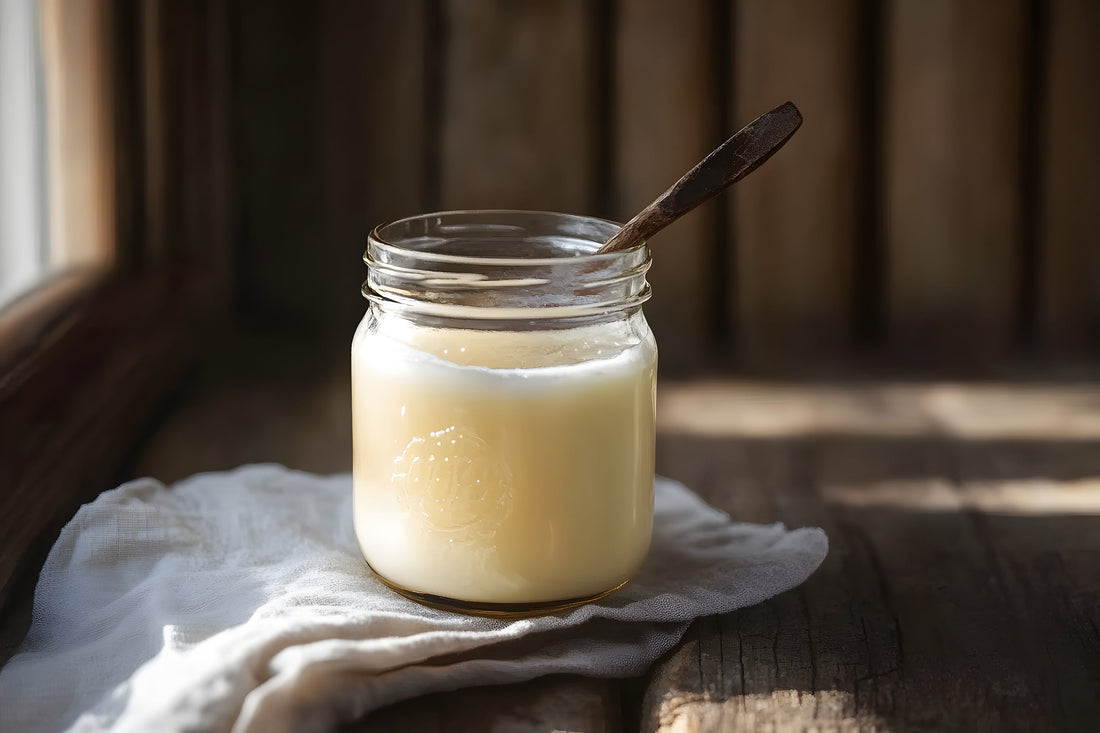
Cooking with Tallow: A Farm-Fresh, Nutrient-Dense Fat
If you’re looking for a nutrient-dense, traditional fat that’s perfect for high-heat cooking, it’s time to bring tallow back into your kitchen. Long before processed vegetable oils took over, our ancestors relied on animal fats like tallow for frying, roasting, and even baking. Not only is tallow incredibly flavorful and versatile, but it’s also packed with healthy fats that support your body in ways seed oils simply can’t.
At Midwest Prime, we believe in honoring the whole animal, using every part we can—including the rich, golden fat that makes pasture-raised beef so special. If you’ve never cooked with tallow before, here’s why you should give it a try.
What is Tallow?
Tallow is rendered beef fat that has been cooked down and strained to remove impurities. When cooled, it becomes solid and creamy white, similar to butter. Unlike highly processed vegetable oils, tallow is a stable, traditional fat that has been used for centuries in cooking.
Why Cook with Tallow?
1. High Smoke Point
Tallow has a high smoke point of around 400°F, making it perfect for frying, roasting, and searing without breaking down into harmful compounds.
2. Nutrient-Dense & Supports Health
Unlike inflammatory seed oils, beef tallow is rich in:
- Conjugated Linoleic Acid (CLA) – known for its anti-inflammatory properties.
- Healthy Saturated Fats – crucial for brain function and hormone balance.
- Fat-Soluble Vitamins (A, D, E, and K) – which support overall wellness.
3. Enhances Flavor
Tallow adds depth and richness to food, bringing out the natural flavors of meat and vegetables. It's a key ingredient in making truly crispy potatoes, golden fried chicken, and beautifully seared steaks.
4. A Sustainable & Budget-Friendly Choice
Using all parts of the animal aligns with traditional, sustainable cooking. Plus, tallow is more cost-effective than constantly buying bottles of expensive oils.
How to Use Tallow in Your Kitchen
Ready to cook with tallow? Here are some easy ways to use it:
🔥 Pan-Frying & Sautéing – Use tallow for searing steaks, frying eggs, or caramelizing onions for a rich depth of flavor.
🥔 Roasting Vegetables & Potatoes – Toss cubed potatoes, carrots, or Brussels sprouts with melted tallow, salt, and pepper before roasting for extra crispy edges.
🍳 Deep-Frying – Tallow makes the best homemade French fries, fried chicken, or even donuts!
🥓 Seasoning Cast Iron – Rub a thin layer of melted tallow onto your cast iron skillet to keep it nonstick and well-seasoned.
🍪 Baking – Swap tallow for butter or shortening in biscuits, pie crusts, or even cornbread for a flaky texture and incredible flavor.
How to Render Beef Tallow at Home
Rendering tallow is a simple, hands-off process that transforms raw beef fat into a clean, shelf-stable cooking fat. Here’s exactly how to do it:
What You’ll Need:
✔ Beef suet or fat trimmings (preferably from pasture-raised beef)
✔ Sharp knife or meat grinder
✔ Slow cooker, heavy-bottomed pot, or oven-safe dish
✔ Cheesecloth or fine-mesh strainer
✔ Glass jars or airtight containers for storage
Step 1: Trim & Cut the Fat
- Start with raw beef fat (suet is the hard fat around the kidneys, but any beef trimmings work).
- Trim off any remaining meat or gristle, as this can affect the purity and shelf life of your tallow.
- Cut the fat into small cubes (about ½ inch) or run it through a meat grinder. Smaller pieces melt faster and render more efficiently.
Step 2: Choose Your Rendering Method
You have three options for rendering:
Method 1: Slow Cooker (Easiest & Hands-Off)
- Place chopped beef fat into a slow cooker.
- Set to low heat (do NOT use high heat, as it can scorch the fat).
- Cook for 6-8 hours, stirring occasionally. The fat will slowly melt, and the solids will separate.
Method 2: Stovetop (Faster, Requires More Attention)
- Place fat into a heavy-bottomed pot or Dutch oven.
- Heat on low, stirring occasionally to prevent burning.
- Cook for 4-5 hours until the fat is fully melted and golden, with crisp bits (cracklings) floating on top.
Method 3: Oven (Good for Large Batches)
- Place fat in an oven-safe dish or Dutch oven.
- Bake at 225°F for about 4-6 hours, stirring occasionally.
- The fat will gradually melt and separate from any solids.
Step 3: Strain the Tallow
- Once fully rendered, remove from heat and let cool slightly (but not enough to solidify).
- Place a cheesecloth-lined strainer over a glass jar or heatproof container.
- Carefully pour the liquid fat through the strainer to remove impurities.
Step 4: Store the Tallow
- Let the strained tallow cool at room temperature—it will turn from a golden liquid to a solid, creamy white fat.
- Store in a glass jar with a lid.
- Room temperature (cool, dark place): lasts several months.
- Refrigerator: lasts 6+ months.
- Freezer: lasts over a year.
Bonus: What to Do with the Leftover Cracklings
The crispy bits left behind after rendering (called cracklings) are delicious! Sprinkle them on salads, add them to eggs, or snack on them with a little salt.
Why We Love Tallow at Midwest Prime
We’re passionate about bringing back time-honored, farm-to-table traditions, and tallow is a big part of that. It’s a better, healthier alternative to vegetable oils—and once you start cooking with it, you’ll never look back.
💛 Heather’s favorite way to use tallow? Roasting potatoes and making the crispiest homemade fries!
You can find our pasture-raised tallow in-store at The Market by Midwest Prime, or try rendering your own at home! Need some beef fat? Reach out to Heather at heather@midwestprimefarms.com and she'll get you some.
Have you cooked with tallow before? Let us know your favorite way to use it!
